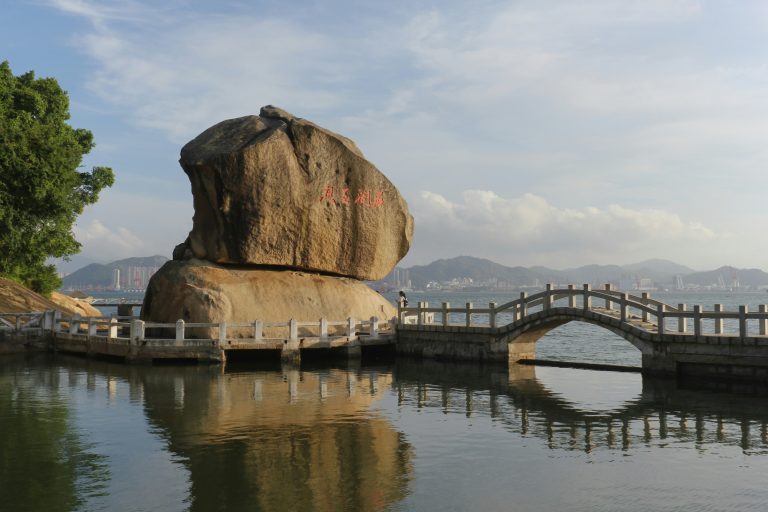Hannah Nation serves as the blog editor for China Partnership. She is studying Church History at Gordon-Conwell Theological Seminary and works part-time with China Outreach Ministries, serving students in the Boston metro area. Follow her personal blog at Carved to Adorn.
Last year, Jeff Robinson wrote a piece over at The Gospel Coalition titled “7 Reasons to Teach Our Children Church History.” As a lover of history generally, and of church history particularly, I loved this article and highly recommend it. In recent years of ministry, I’ve often thought about the need to incorporate church history better into international evangelism and church education strategies, and many of his points are salient for work with Chinese. I’ve written previously about the need for the redemptive-historical narrative in working with Chinese students and the disservice, if not harm, we cause when we fail to invite people into the expansive body of Christ that spans not just the globe, but the ages. I think some of Robinson’s points are well applied to the raising up of healthy disciples across the globe, and China in particular.
1. “Because they must know that Christianity is a historical faith.”
Robinson makes the point that teaching church history roots our faith in its real historical dimensions. “Jesus really lived. He died. He rose again. He ascended into heaven. He is building his church, just as he promised. Church history bears witness to all of these facts, all of which took place – and are taking place – in time and space.”
This point is vitally important in our ministries to Chinese. We often underestimate how much even secular Americans understand the historicity of the Christian faith, and generally overestimate the degree to which Chinese understand Christianity’s historic dimensions. Ideas and assumptions still in the water in the West – for example, the fact that Jesus was from the Middle East – are common among even the most unchurched American. On the other hand, most Chinese first associate Christianity with America, not the ancient world, and it can be quite shocking and revelatory for Chinese to start digging into the cultural past of Christianity. Furthermore, it is very common for even baptized Chinese believers to not understand that Christianity claims Jesus really was a man in the flesh, who really did die, and really did come back to life. The rootedness of the gospels in time, place, and matter is distinct from Asia’s religious heritage, and it is important to communicate to Chinese disciples that the faith they enter is much more than belief in a true idea.
2. “Because we want them to avoid chronological snobbery.”
As Robinson states, “Like their parents, our children are constantly inundated with messages of ‘new’ and ‘better’… I want my children to know that the gospel is not new, cannot be improved, and will never change.” Basic definitions of modernity hold that traditional cultures tend to look back to their ancestors for meaning and definition, whereas the modern world looks forward, trusting in progress. The Christian faith believes that we live in between, in a state of both looking back to the work of Christ and the history of his saints, while also persevering ahead to the final result, anticipating God’s redemptive work in this world. Christianity speaks to and challenges both the traditional and the modern view of self and time.
This something the Chinese church needs to remember, just as we in the West need to remember it in our churches, too. Because China attempted to abandon its cultural history in pursuit of modernity during the last century, there is often confusion about both its past and its future. But one thing is certain – despite its two-thousand year history, contemporary China loves “newness.” Even the entrance and growth of Christianity in the nation has benefitted from the desire to find a new solution to age-old problems. As China amazingly pulls itself out of the last century and enters into a period of unprecedented progress, the church needs to guard and protect its flocks from the idea that everything new is good, and that the progress of the nation will mean the progress of people’s hearts.
A healthy perspective on and understanding of the history of the church will help keep the church looking back to the past, hopeful for the future, and humble in its time and space. The saints that have gone before have much to say to us, and just as we believe in the need to hear the voices all of the saints across the globe today, so too do we owe a listening ear to the saints across the ages past.
3. “Because they need to know that the Bible is worth dying for.”
“I want my children to know that our Bibles – especially that we have an English translation in virtually every room of our house – did not come cheap. Men and women were imprisoned, harassed, beaten, and killed so we could read the Bible in our native tongue. They also argued, fought, were persecuted, even died over standing firm upon an orthodox interpretation of it.” This will be the most familiar point for many Chinese. The Chinese church knows suffering and we in the West may quickly be approaching a time when we turn to our siblings across the Pacific to learn from them how to suffer.
Nonetheless, it is important for the Chinese church to teach the big picture of church history, not only their own history, for their own encouragement and edification. They are not alone in their sufferings, and by suffering, they enter into the great register of saints who have borne Christ’s cross. Through studying centuries of the church’s suffering across the globe, the Chinese church can offer its members a global perspective of God’s work, a big picture of how their suffering unites them not only with Christ, but with his people through time.
We do not know what will happen in China in the coming century and what the situation of the church will look like a hundred years from now. If we look back in history, some of God’s people have at last been released from suffering, often as the result of dramatic cultural change. Others have continued to suffer, sometimes for centuries. But in the end, all of these people have triumphed in Christ. Whether or not the political and cultural situation changes in China, the church triumphs and it should find great comfort and peace in the fellowship of the saints throughout time.
4. “Because they must know that theology is important.”
“I want them to know about Augustine and Pelagius, Calvin and Arminius, Wesley and Whitefield and the theological differences that divided them, and why such a division was necessary in the first place. I want my children to be good theologians, aware that everyone has a theology and not all of them square with Scripture. I want them to know that ideas have consequences for both good and evil. The apostle Paul had a worldview. So did Hitler.” I find each of Robinson’s sentences here incredibly important for ministry to Chinese students, and I pray often for more people working with Chinese to take this seriously. Ideas matter, and they have mattered tremendously for the church.
Chinese international students consistently ask me about the myriad churches and denominations that they encounter in the United States. It could be very easy to dismiss these questions and tell my friends to just read the Bible, believe in Jesus, and not worry about the different kinds of churches. But when I do so I communicate, “Ideas don’t matter, and the lives of thousands of people who died for their ideas don’t matter.” I dishonor the saints that have gone before and stunt the spiritual growth of my Chinese students when I don’t help them engage the theological differences Christians have developed.
The moment a person starts reading the Bible, she starts interpreting it and those interpretations significantly impact the shape of her faith. Many people are afraid of exporting our denominational and theological baggage to places like China. This is not an invalid fear – the Western church will have great repenting to do if it causes its siblings to stumble in the ways it has stumbled concerning Christian unity. However, the solution is not to ignore the history of ideas, but rather to develop a robust and active commitment to unity in diversity.
5. “Because we want them to know that even great men are deeply flawed.”
With this last one, I’ll simply quote Robinson. What he says is easily applied to the Chinese context. “Paint a full, three-dimensional picture of your heroes from the pages of church history – the good, the bad, the ugly – to remind your children that Jesus was/is the sole perfect man. Tell them that some great spiritual leaders like King David in the Old Testament did foolish things, a reminder that sinners are saved by the righteousness of another. God draws straight lines with crooked sticks. Perhaps this perspective will help steer your children away from the deadly ditches of pharisaism and perfectionism.”
Amen! Including the history of the church in your evangelism and discipleship is one of the best ways to avoid moralism. In my opinion, it is impossible to look at the history of the church and fail to see its sin. But that should not discourage us. We study those who have gone before not to find in them moral exemplars, but rather to learn how our great God can preserve his church through the ages with broken and twisted people. The church has, does, and will fail, but her Savior and Head cannot.
So where to go with these thoughts? Robinson ends his article by suggesting some good resources for teaching church history to children, but such resources are much more difficult to find for the Chinese church. Translation of Western works is increasing and this is good and helpful, but in my opinion what we really need is people. The Chinese church needs and is developing excellent pastoral training, but it also needs to raise up Christian educators, going beyond theologians and exegetes to include historians. As an American, I can help try to teach and interpret the history of the church for Chinese context, but it will be best done by Chinese educators themselves. As they document and write their own church history, they will be the best at understanding how it connects to the bigger story of God’s work throughout the world.































